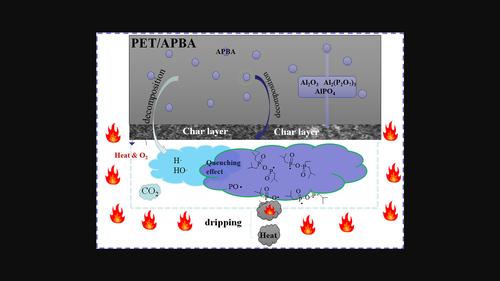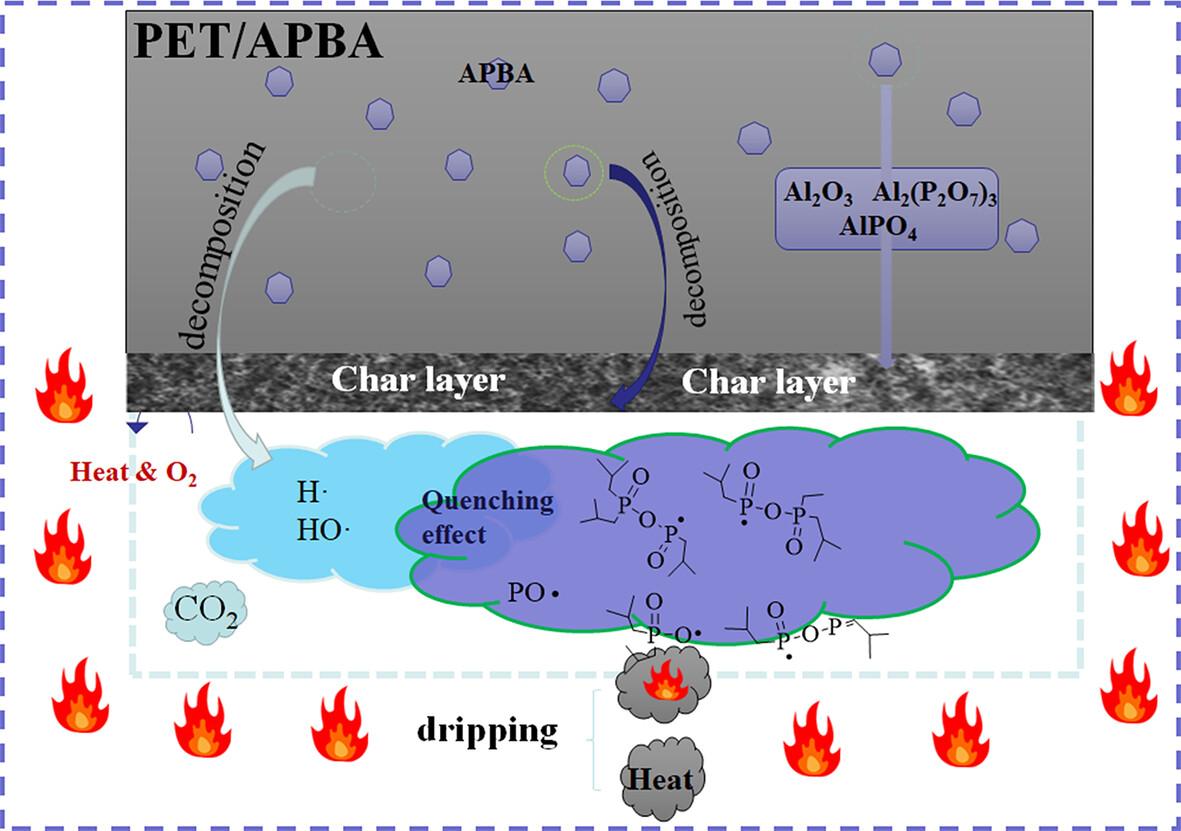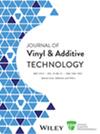Effect of aluminum diisobutyl hypophosphate in polyethylene terephthalate and its flame retardant mechanism
Abstract
Alkyl hypophosphate flame retardants have aroused intense research interests in flame retardancy of polymers owing to the combined effect of gas phase and condensed phase. In this work, aluminum diisobutyl hypophosphate (APBA) was incorporated into polyethylene glycol terephthalate (PET) to investigate its flame retardant effect and mechanism. PET achieved a V-2 level in UL-94, with a low LOI of 21.2%. In contrast, PET/APBA-15% composites showed a 51% increase of LOI value and a V-0 level, accompanied with the significant reduction of melt droplets. Gas phase analysis by Py-GC/MS and TG-FTIR indicated that the phosphorous free radicals and nonflammable gases were generated during the cracking of APBA, resulting in the radical quenching and dilution of combustible gas. Condensed phase analysis by SEM, Raman, and XPS results revealed that APBA could effectively facilitate the formation of dense char layers consisting of aluminophosphate and graphitic structures due to the interaction with PET matrix. The compact barrier layer could insulate heat and inhibit the volatilization of combustible materials, leading to improved flame retardant properties. Furthermore, the introduction of APBA increased the melt viscosity of PET/APBA composites according to rheological analysis, which further promoted the formation of a char barrier layer to further enhance the flame retardant properties.
Highlights
- Aluminum diisobutyl hypophosphate is used as an efficient flame retardant for PET.
- The flame retardant can degrade to release the phosphorous free radicals.
- The flame retardant can interact with the PET matrix and promote the charring.



 求助内容:
求助内容: 应助结果提醒方式:
应助结果提醒方式:


